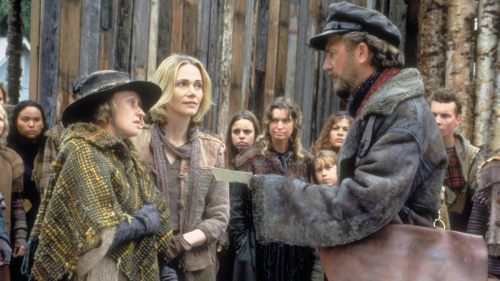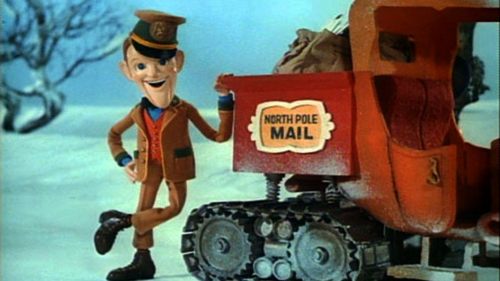Space Is Hard
Let’s face it: space is a great place to set movies. In space, future versions of ourselves can duke it out with extra-terrestrials, dark cosmic energies or, more simply, evil future versions of ourselves. Space is so big that, frankly, it’s hard to imagine all that crazy stuff not being out there, somewhere, someday, one way or another. And so, more often than not, space films hit the fast-forward button on human progress, whisking us past our current baby steps to a time when we can sail the cosmos but somehow seem to keep having the same problems getting along that we’ve always had.
There is a minority of pictures, though, that stays a little closer to home and a little more rooted in our current predicament vis-à-vis space travel. And while I love a good interstellar yarn as much as the next space cadet, I have to admit a preference for these more reality-based films. Titles such as Apollo 13, inspired by true events, and Moon, an easy extrapolation from where we are now, both come to mind. This month at the Alamo Drafthouse, we’re featuring another pair of films from that same cohort: Stanley Kubrick’s 2001: A Space Odyssey and Alfonso Cuarón’s Gravity.
There’s great dramatic hay to be made out of contemporary space travel because, quite frankly, space is hard. That’s an easy thing to forget, since we’ve made trips to and from low Earth orbit pretty routine over the last 40 years, and we’ve gone to the surface of the Moon a few times to boot. But that track record belies the contribution of an army of scientists, engineers and technicians working tirelessly to make it all seem so easy. The dangers are myriad, and, even today, traveling to Earth’s orbit isn’t for the faint of heart. And that’s to say nothing of trying to travel beyond orbit to the Moon and points more distant.
Gravity gets a lot of mileage from one of the biggest unmitigated threats to spacecraft currently on orbit: space debris. Since Russia flew Sputnik in 1957, the spacefaring nations of Earth have thrown more and more equipment into orbit. Every spent rocket booster and end-of-life satellite up there joins bits of space rock captured by Earth’s gravity to create a sea of junk that can circulate for years before burning up in Earth’s atmosphere. To complicate matters, this debris tends to self-pulverize, forming a cloud of smaller and smaller bits that are increasingly hard for spacecraft to avoid. At orbital speeds, each piece of junk acts like a bullet, and for manned space vehicles, orbital debris strikes can mean loss of power, loss of coolant or, more terrifyingly, loss of atmosphere. Gravity paints a stark and realistic picture of a worst-case orbital debris strike.
And then there’s 2001, the great granddaddy of reality-based science fiction movies. There’s so much to be said about how carefully Kubrick and co-writer Arthur C. Clarke incorporated the 1960s’vision of where we were headed as a spacegoing people. Their designs for orbital hotels, moon colonies and long-duration space vessels both borrowed from the forward-looking concepts of the day and fleshed them out to provide a template that, quite frankly, still influences the thinking of those in the space business. This dedication to detail is best seen in the wonderfully intimate picture of life onboard the spaceship Discovery One, which is headed to the outer planets on a very long journey. To combat the ravages of weightlessness on human physiology, Discovery’s two crew members live and work on the interior surface of a rotating centrifuge simulating Earth’s gravity. In order to illustrate the mind-blowing perspective when out is the new down, Kubrick built the whole set as a giant rotating barrel, and he spun it around his actors as they traversed from one area of the ship to another.
We’re entering an exciting time in our progress outward. Commercial companies are on the verge of opening orbital trips to private citizens, and governments are contemplating voyages past Earth’s orbit for the first time in forty years. As we push outward, the dangers will be no less present than they always have been. We’ll deal with potentially fatal solar flares, ask our astronauts to put up with the psychological rigors of long trips in small spaces and rely on vanishingly small windows of opportunity in orbital mechanics just to make the trips possible. Robots -- humanoid and otherwise -- will almost certainly be our constant companions and workhorses. And, wherever we go, we’ll likely have to live off the land if we intend to stay for any length of time. The future, in other words, is ripe for a new generation of speculative science fiction, inspired by -- and building on -- the adventures to come.
This was originally published in the "Space: The Final Frontier" issue of Birth.Movies.Death. in honor of Alfonso Cuarón's Gravity. See it at the Alamo Drafthouse this month! You can hear Ray discuss the portrayal of space exploration in movies on NPR last week here.



